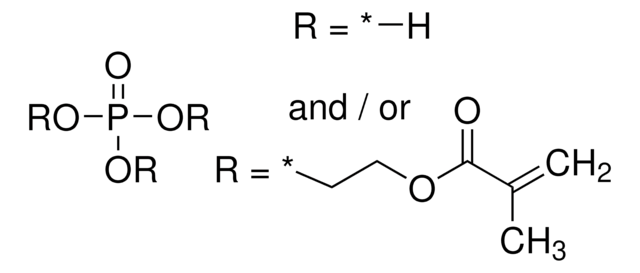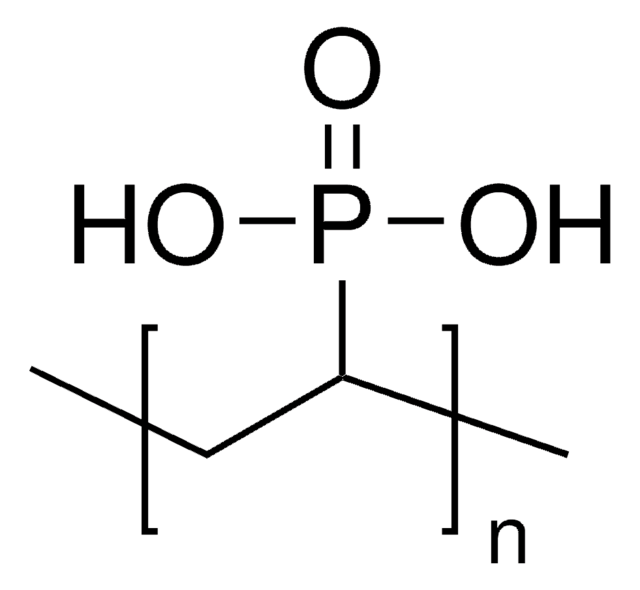795739
11-Phosphonoundecyl acrylate
Synonym(s):
(11-(Acryloyloxy)undecyl)phosphonic acid
Sign Into View Organizational & Contract Pricing
All Photos(1)
About This Item
Empirical Formula (Hill Notation):
C14H27O5P
CAS Number:
Molecular Weight:
306.33
MDL number:
UNSPSC Code:
12352103
PubChem Substance ID:
NACRES:
NA.23
Recommended Products
form
powder
SMILES string
O=C(C=C)OCCCCCCCCCCCP(O)(O)=O
InChI
1S/C14H27O5P/c1-2-14(15)19-12-10-8-6-4-3-5-7-9-11-13-20(16,17)18/h2H,1,3-13H2,(H2,16,17,18)
InChI key
RLAKYYIYWIWCED-UHFFFAOYSA-N
Related Categories
General description
11-Phosphonoundecyl acrylate is a bifuncational ligand that forms a self-assembled monolayer (SAM) on a variety of substrates. It binds with the surface metal atoms by attaching the phosphonic acid head groups.
Application
Tuning of surface energy, wetting, and work function of metal oxides. Allows further chemistry on surface.
Signal Word
Warning
Hazard Statements
Precautionary Statements
Hazard Classifications
Eye Irrit. 2 - Skin Irrit. 2 - STOT SE 3
Target Organs
Respiratory system
Storage Class Code
11 - Combustible Solids
WGK
WGK 3
Flash Point(F)
Not applicable
Flash Point(C)
Not applicable
Choose from one of the most recent versions:
Already Own This Product?
Find documentation for the products that you have recently purchased in the Document Library.
Mechanoresponsive Polymerized Liquid Metal Networks
Thrasher C, et al.
Advanced Materials, 1903864-1903864 (2019)
Carl J Thrasher et al.
Advanced materials (Deerfield Beach, Fla.), 31(40), e1903864-e1903864 (2019-08-14)
Room-temperature liquid metals, such as nontoxic gallium alloys, show enormous promise to revolutionize stretchable electronics for next-generation soft robotic, e-skin, and wearable technologies. Core-shell particles of liquid metal with surface-bound acrylate ligands are synthesized and polymerized together to create cross-linked
Our team of scientists has experience in all areas of research including Life Science, Material Science, Chemical Synthesis, Chromatography, Analytical and many others.
Contact Technical Service
![Bis[2-(methacryloyloxy)ethyl] phosphate](/deepweb/assets/sigmaaldrich/product/structures/128/336/4e7a3e38-338c-423e-95b8-70d9d1f8e121/640/4e7a3e38-338c-423e-95b8-70d9d1f8e121.png)








